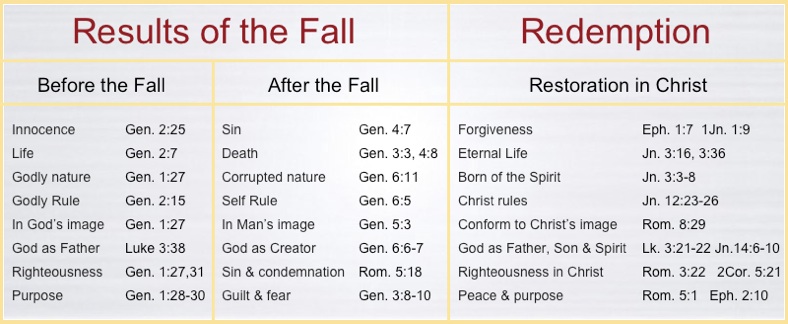
Believers are familiar with the formal division of the Bible into the Old and New Testaments and the sixty-six books they contain. We are less knowledgeable about God’s “informal” organization of Scripture through the Covenants. Yet the Bible is actually the written historical record of these covenants. With the Fall of Adam and Eve, mankind lost eternal life and became subject to the power of sin and death. However, God promised a Redeemer to restore what Adam lost through disobedience. The Lord’s salvation plan is based on seven messianic covenants that progressively reestablished man’s knowledge of, and relationship with, God in preparation for the coming Messiah.
The messianic covenants mark the unfolding of God’s plan of Redemption, from the first shedding of blood in Eden to the redeeming blood of Christ that opened the gates to the kingdom of God. The seven Messianic Covenants differ from the covenants researched by theologians such Pentecost and Unger and presented as Biblical Covenants. The traditional presentation of Biblical covenants misses the thematic development of God’s redemptive plan, i.e., the underlying restorative purpose of the messianic covenants. While there are in fact many Old Testament covenants, there are only seven that can be considered messianic, and these can be identified by seven elements listed in Scripture that are common to each. They are also identified by their themes, which are confirmed elsewhere in Scripture, especially the feasts of the Lord. These themes provide a window into the mind of God as it pertains to his salvation plan.
The following chart illustrates the conditions that existed prior to the Fall and how things changed afterwards. The six Old Testament messianic covenants prepared the way for Jesus to restore what mankind had lost. Christ’s fulfillment of these covenants on the cross will come to completeness after the establishment of a new heaven and earth, when God’s will prevails and mankind once again lives in a paradise on earth, and Christ turns the Kingdom over to the Father. (1Cor. 15:24-26)

The Messianic Covenants
From the beginning, God established covenant relationships with mankind. Because a covenant is similar to a legal contract, with each party having certain rights and responsibilities, those in covenant relationship with God knew exactly what he expected of them, as well as what they could expect from him. Covenants made relationship with God possible.

The first recorded messianic covenant in Scripture was between God and Adam in the Garden of Eden. It was made without the shedding of blood, before human nature had become corrupted by sin. After Adam’s disobedience, man became separated from God, losing many of the blessings he had enjoyed. Though mankind paid the price for violation of God’s commandment, the Lord’s Covenant with Adam continued in force. God and man made a new beginning through the blood of the first recorded animal sacrifice, producing clothes for Adam and Eve. When the Lord drove them from Eden, he promised he would send a Redeemer, or Messiah to defeat Satan and redeem mankind, to pay the required penalty of death for sin so the lost Father-child relationship could be restored.





Copyright 2011

Click on right arrow to view Messianic Covenant Charts


